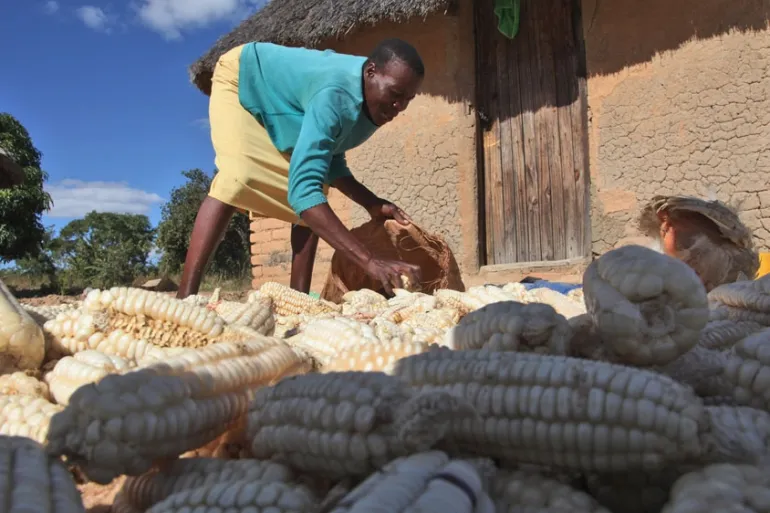Harare, Zimbabwe – The unforgiving sun beats down on the parched earth, a stark reminder of the El Niño-induced drought that has crippled Zimbabwe. As crops wither and livestock perish, the once-fertile land now lies barren, pushing the country towards a dire food shortage.
The United Nation’s World Food Program (WFP) and several non-profit organizations have sounded the alarm, highlighting the severity of the crisis.
In a social media post on X, WFP revealed that at least nine million Zimbabweans, predominantly from rural areas, are in desperate need of food aid. The drought has particularly affected vulnerable groups, including children under five, adolescents, and pregnant women, exacerbating malnutrition and health issues across the nation.
Standing in the fields of Mashonaland West, farmer Tatenda Chikwana expresses his despair. “I’ve never seen anything like this,” he says, looking over his scorched maize crops. “We depend on these crops for our livelihood, and now there’s nothing left.”
The gravity of the situation prompted President Emmerson Mnangagwa to declare a national disaster in April, a sentiment echoed by leaders across southern Africa as they grapple with the El Niño weather pattern’s devastating impact. The declaration aims to mobilize resources and international support to address the growing humanitarian crisis.
Efforts to provide relief are underway, but challenges remain. The logistical hurdles of reaching remote villages and the sheer scale of the need make it a daunting task. WFP and its partners are working tirelessly to distribute food aid, but they emphasize that more support is crucial.
As Zimbabwe faces one of its most severe droughts in recent history, the call for global solidarity and action grows louder. The nation’s resilience is being tested, and the coming months will be critical in determining how effectively the crisis can be mitigated.




